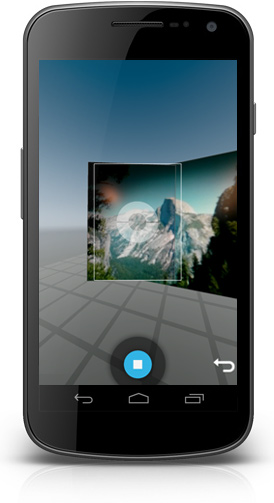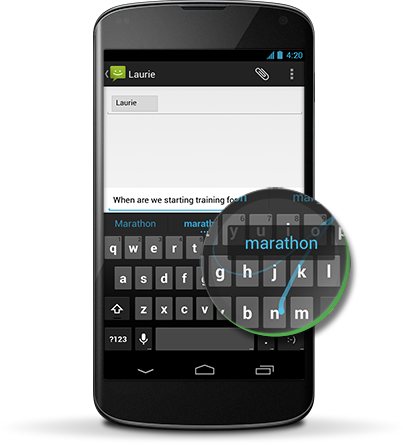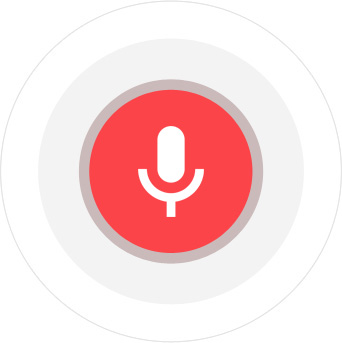Android and iOS have long been enemies in the smartphone and tablet space, each taking vastly different tacks. iOS, Apple’s mobile operating system on the iPhone and iPad, was lauded for its simplicity and damned for its lack of features, while historically Android has been the reverse. But since Android 4.0 or “Ice Cream Sandwich”, Android has been making massive improvements to its style and usability, while continuing to add features at a rate unmatched by Apple.
Here are three reasons why the latest version, Android 4.2 “Jelly Bean” is so brilliant.
1) The camera software is amazing
 The iPhone’s camera has always been a source of pride for Apple; for many people the iPhone has completely replaced their point-and-shoot camera due to its ease of use, powerful hardware and wide ecosystem of photography apps that offer filters and social sharing. With Android 4.2, Google have introduced some major changes and new features that make the standard camera app in Android much more powerful than anything available for iOS.
The iPhone’s camera has always been a source of pride for Apple; for many people the iPhone has completely replaced their point-and-shoot camera due to its ease of use, powerful hardware and wide ecosystem of photography apps that offer filters and social sharing. With Android 4.2, Google have introduced some major changes and new features that make the standard camera app in Android much more powerful than anything available for iOS.
Probably the biggest usability improvement is the new camera interface. Instead of having to push a menu button to change things like exposure, high dynamic range (HDR) and which camera is being used, you can now just press and hold anywhere on the screen. This brings up a radial menu, where you can make those kind of changes quickly – and most importantly of all- with only one finger, without changing your grip on your phone. It’s a simple change, but it makes the act of taking photos much more seamless. It’s the kind of ease that you’d more commonly associate with an Apple product, and a good example of the kind of changes that Google are making to Android to make it more natural to use.
This same ease of use is also extended to more complicated functions. For example, one of the coolest things that you can show off on the latest version of Android are Photo Spheres. These are panoramic photographs taken to the next level – instead of just moving left to right to create a long and thin combined photograph, you can stitch together photos taken from any angle – left and right, top to bottom. This creates, as the name suggests, a kind of sphere all around you, just like shots you’d find on Google Street View. For the amazing end result, it’s quite easy to do – it’s just a case of rotating the phone, fixing onto the blue dots that are superimposed on the viewfinder and letting the software do the hard work stitching it all together.
2) Typing on a virtual keyboard just got way faster
 The other Android 4.2 feature that is super easy to demo is the new keyboard software. If you’ve heard of Swype, it’s pretty much the same thing – instead of tapping on each letter individually, you just trace a line that goes across each letter in order. Some really clever predictive software ensures that even if you’re a bit sloppy or you’re typing quickly, you still get phenomenal accuracy – I’d say it’s in the order of only 1 of every 20 or 30 words is incorrect. And in these cases, it’s easy to just tap out the word manually.
The other Android 4.2 feature that is super easy to demo is the new keyboard software. If you’ve heard of Swype, it’s pretty much the same thing – instead of tapping on each letter individually, you just trace a line that goes across each letter in order. Some really clever predictive software ensures that even if you’re a bit sloppy or you’re typing quickly, you still get phenomenal accuracy – I’d say it’s in the order of only 1 of every 20 or 30 words is incorrect. And in these cases, it’s easy to just tap out the word manually.
The upshot of all of this is that typing on Android 4.2 is incredibly rapid – you can type as fast as the average typist on a full keyboard, which is just ridiculous. Where once you’d hesitate to crack out that long form email on the go, with the new “gesture typing” keyboard you can tackle anything from a brief text message to a fairly long article like this one.
There’s another benefit too – you only need one finger to do it. This means that even if you’re holding a large tablet like the Nexus 10, you can easily hold onto the device with one hand and write with the other – so typing is something that you can do on the move, instead of something that’s only possible with a dock and a convenient orientation.
Once you use gesture typing on Android 4.2, you’ll find it incredibly hard to go back to any other device – it just seems so pointlessly slow.
3) Google Now: your eerily omniscient personal assistant
Apple’s Siri personal assistant was the headline feature of iOS 6, and with each subsequent update she’s gotten more capable. But with Android 4.2, Google have provided a killer alternative: Google Now. Instead of being a program that finds the answers to your queries when you ask for them, Google Now is more advanced: It provides answers before you even ask it.
While this is a bit eerie at first, in practice it’s an absolute godsend. Using clever algorithms and Google’s vast data banks on all of its users, it’s able to work out for itself where you live, where you work and what you’re interested in. By itself this would be impressive, but what makes Google Now so perfect is its near prescient timing. Because it knows when you leave for work in the morning, it’ll give you an ETA for your destination and news of any delays as you’re leaving the house. If there’s a game going on with a sports team that you’re interested team, it’ll give you an alert when it starts and the current scoreline. If you miss the game, it’ll tell you about it the next day.
 With another Google-crafted app called Field Trip, the app gets more clever. Using a combination of GPS, nearby Wi-Fi hotspots and cell towers, it works out where you are and lets you know if you’re near any points of interest – restaurants, theatres, landmarks and the like. If you’re ever travelling or just bored, it’s a fantastic way to get ideas on what to do next.
With another Google-crafted app called Field Trip, the app gets more clever. Using a combination of GPS, nearby Wi-Fi hotspots and cell towers, it works out where you are and lets you know if you’re near any points of interest – restaurants, theatres, landmarks and the like. If you’re ever travelling or just bored, it’s a fantastic way to get ideas on what to do next.
Google Now is only set to get more useful in the future, as it gains access to new information sources. The Android 4.2 update included allowing the program access to your Gmail, allowing it to track packages as they’re sent and provide flight information as you near the gate. While it’ll no doubt irk some privacy advocates, if Google sticks by its “Don’t Be Evil” pledge then the service is set to become one of the most defining features of Android.
Conclusion
So there you have it – three reasons why Android 4.2 is brilliant. While iOS still offers an unmatched app ecosystem, some really nice features and a beautiful pairing with Apple’s superlative iPhone and iPad hardware, I really feel that it’s falling behind Android with every new release. If you’re interested in what you’ve read here, have a play with Google’s Nexus smartphones and tablets and see if they catch your fancy – they certainly have caught mine.